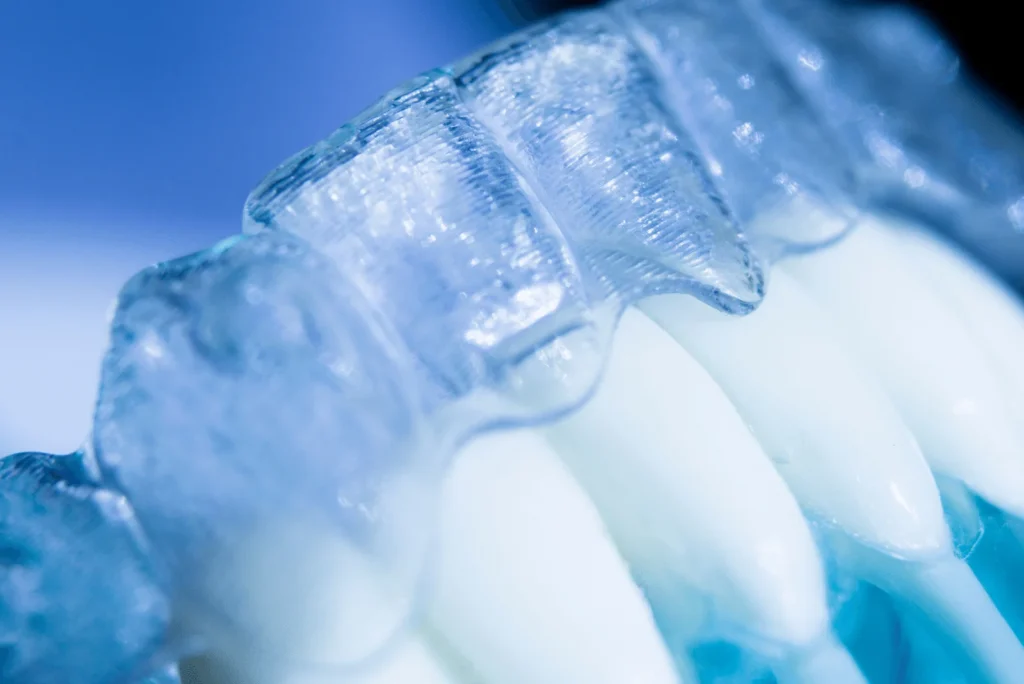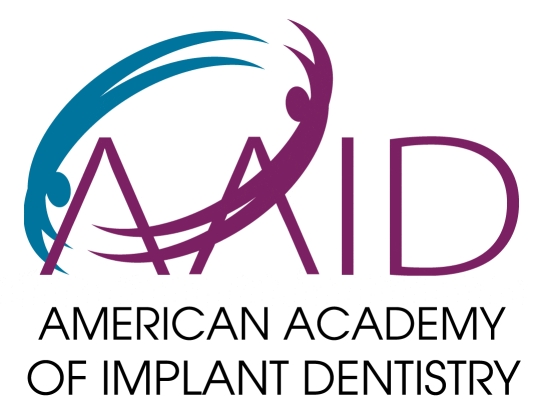How to prevent teeth from shifting after Invisalign is one of the most common concerns I encounter as a dentist at Lansdowne Family Dental with over 15 years of experience in orthodontic treatments. The reality is that teeth naturally have a tendency to move back toward their original positions after any orthodontic treatment, but this doesn’t mean your beautiful new smile is doomed to disappear. With proper post-treatment care and commitment to retention protocols, you can maintain your straight teeth and confident smile for decades to come. In this comprehensive guide, we’ll explore the science behind tooth movement after Invisalign, reveal the most effective strategies for preventing unwanted shifts, and provide you with actionable steps to protect your orthodontic investment long-term.
How to Prevent Teeth from Shifting After Invisalign?
To maintain your Invisalign results and keep your smile looking its best, follow these key steps:
- Wear your retainer as prescribed:
- This is crucial for maintaining your new smile.
- Initially, you may need to wear your retainer full-time, gradually transitioning to nighttime wear only.
- Even years after treatment, wearing your retainer a few nights a week can help maintain results.
- Attend regular dental check-ups:
- We recommend visits every 6 months for cleaning and examination.
- During these visits, we can monitor for any slight movements and address them early.
- Practice excellent oral hygiene:
- Brush twice daily with a soft-bristled toothbrush and fluoride toothpaste.
- Floss daily to remove plaque between teeth and along the gumline.
- Consider using an interdental brush or water flosser for thorough cleaning.
- Use an antiseptic mouthwash to reduce bacteria and freshen breath.
- Use a mouthguard for sports:
- Protect your investment during physical activities.
- A custom-fitted mouthguard from Lansdowne Family Dental offers the best protection and comfort.
- Maintain a healthy diet:
- A balanced diet supports strong teeth and bones.
- Limit sugary and acidic foods that can erode enamel and lead to decay.
- Include calcium-rich foods to support bone health.
- Avoid harmful habits:
- Don’t chew on pens, ice, or other hard objects.
- If you smoke, consider quitting to improve overall oral health.
- Address teeth grinding:
- If you grind your teeth at night, ask us about a custom night guard.
- Stress reduction techniques may also help reduce teeth grinding.
- Stay hydrated:
- Drinking plenty of water helps maintain saliva flow, which naturally cleanses teeth.

Understanding Post-Invisalign Tooth Movement
First, it’s important to understand that “normal” in this context refers to the pre-treatment position of your teeth. After Invisalign gently moves your teeth into a new, straighter alignment, your teeth and jawbone need time to adjust and stabilize in their new locations. Let’s explore the biological processes at work:
- Bone Remodeling:
- Immediately after treatment, the bone surrounding your teeth is still soft and actively remodeled.
- This process, called orthodontic bone remodeling, involves the breakdown of old bone tissue and the formation of new bone to support your teeth in their new positions.
- It can take up to 12 months for this process to fully stabilize.
- Periodontal Ligament Adaptation:
- The periodontal ligament, which connects your teeth to the jawbone, also needs time to adjust to the new tooth positions.
- This ligament acts like a shock absorber and plays a crucial role in maintaining tooth stability.
- Natural Shifting:
- Some minor tooth movement is normal and expected due to everyday activities like biting, chewing, and speaking.
- This natural shifting is usually minimal and doesn’t significantly affect your overall alignment.
- Orthodontic Relapse:
- Without proper retention, teeth may start to drift back towards their original positions. This is known as orthodontic relapse.
- The risk of relapse is highest in the first year after treatment but can occur even years later if retention is not maintained.
Factors That Can Cause Teeth to Shift After Invisalign
Several factors can contribute to teeth shifting after Invisalign treatment. Understanding these risks can help you take proactive steps to maintain your results:
- Not wearing retainers as instructed:
- This is the most common reason for orthodontic relapse.
- Retainers are crucial in the first 12-18 months post-treatment when bone remodeling is still occurring.
- Irregular dental check-ups:
- Missing appointments can lead to undetected minor tooth movements.
- Regular check-ups allow us to catch and address any shifts early.
- Not using a mouthguard during contact sports:
- Strong impacts can displace teeth, even years after orthodontic treatment.
- A custom-fitted mouthguard provides the best protection.
- Natural changes in jaw and teeth:
- Jaw growth can continue into early adulthood, potentially affecting tooth alignment.
- Wisdom teeth eruption can exert pressure on other teeth, causing shifts.
- Developing gum disease:
- Periodontal issues can lead to bone loss, which may result in tooth movement.
- Maintaining excellent oral hygiene is crucial for long-term orthodontic stability.
- Teeth grinding or clenching (bruxism):
- These habits can exert excessive force on teeth, potentially leading to shifts over time.
- Night guards may be recommended for patients with bruxism.
- Age-related changes:
- As we age, our teeth naturally tend to shift forward and inward.
- Consistent retainer use can help counteract these natural changes.
Types of Retainers: Choosing the Right Option for You
At Lansdowne Family Dental, we offer several types of retainers to suit different needs and preferences:
- Fixed Retainers:
- Thin wire bonded to the back of your teeth
- Pros:
- Provide constant retention
- No need to remember to wear them
- Invisible from the front
- Cons:
- Require special care for cleaning
- May make flossing more challenging
- Best for: Patients who want “set it and forget it” retention
- Removable Hawley Retainers:
- Traditional retainers with a wire across the front of teeth
- Pros:
- Durable and adjustable
- Can be used to make minor tooth movements
- Cons:
- Visible when worn
- May affect speech initially
- Best for: Patients who may need minor adjustments post-treatment
- Clear Plastic Retainers (e.g., Vivera):
- Similar in appearance to Invisalign aligners
- Pros:
- Nearly invisible
- Comfortable to wear
- Can double as a nightguard for teeth grinders
- Cons:
- May need replacement more frequently than other types
- Can warp if exposed to heat
- Best for: Patients who prioritize aesthetics and comfort
Retainer Wear Schedule: A Timeline for Long-Term Success
The duration and frequency of retainer wear can vary based on individual cases, but here’s a general guideline we recommend at Lansdowne Family Dental:
- First 3-6 months:
- Wear retainers 20-22 hours per day, removing only for eating and oral hygiene
- This phase is crucial for allowing bone remodeling to stabilize your new tooth positions
- Next 6-12 months:
- Transition to wearing retainers at night only
- Continue this nightly wear for at least 12 months post-treatment
- Long-term maintenance:
- Continue wearing retainers several nights per week indefinitely
- Many patients find that 3-5 nights per week is sufficient for maintaining their results
Remember, this schedule may be adjusted based on your specific needs. Some patients, especially those who had significant tooth movement during treatment, may need to wear retainers more frequently or for a longer period.
What If My Teeth Have Already Shifted?
If you notice your teeth shifting after Invisalign, don’t panic. There are several options we can explore at Lansdowne Family Dental:
- Resume retainer wear:
- If it’s been a short time since you stopped wearing your retainer, your current retainer might still fit and be effective.
- Try wearing your retainer full-time for a few days to see if your teeth shift back into place.
- New retainers:
- We can create new retainers to gently guide your teeth back to their post-treatment positions.
- This option works best for minor shifts that have occurred recently.
- Invisalign Express:
- For minor shifts, a short course of new aligners (5-10 sets) might be recommended.
- This “touch-up” treatment can address small movements efficiently.
- Re-treatment:
- In cases of significant relapse, we might suggest a new round of Invisalign treatment.
- This would involve a full assessment and new treatment plan.
- Combination approach:
- Sometimes, a combination of methods (e.g., new retainers followed by Invisalign Express) may be the most effective solution.
The Importance of Regular Check-ups
Regular dental check-ups play a crucial role in maintaining your Invisalign results. Here’s why these visits are so important:
- Early detection: We can spot minor shifts before they become major problems.
- Retainer assessment: We’ll check the fit and condition of your retainers, replacing them if necessary.
- Oral health monitoring: Keeping your teeth and gums healthy supports long-term orthodontic stability.
- Personalized advice: We can provide tailored recommendations based on your unique dental situation.
- Peace of mind: Regular check-ups ensure you’re doing everything possible to maintain your beautiful smile.
At Lansdowne Family Dental, we recommend check-ups every 6 months for most patients. However, we may suggest more frequent visits in the first year after Invisalign treatment or if you have specific oral health concerns.
Conclusion: Maintaining Your Invisalign Results for Life
At Lansdowne Family Dental, we’re committed to helping you maintain your beautiful Invisalign results for years to come. Remember, the key to long-lasting results is a combination of:
- Consistent retainer wear
- Excellent oral hygiene
- Regular dental check-ups
- A healthy lifestyle
Your smile is an investment in your health, confidence, and overall well-being. With proper care and the support of our experienced team at Lansdowne Family Dental, you can enjoy straight, healthy teeth for a lifetime.
If you have any concerns about your Invisalign results, questions about retainer wear, or simply want to ensure you’re doing everything right to maintain your new smile, don’t hesitate to contact us. We’re here to support you every step of the way in your journey to a lifetime of beautiful smiles!
Remember, every smile is unique, and so is every post-Invisalign care plan. Let’s work together to keep your smile looking its absolute best for years to come!






